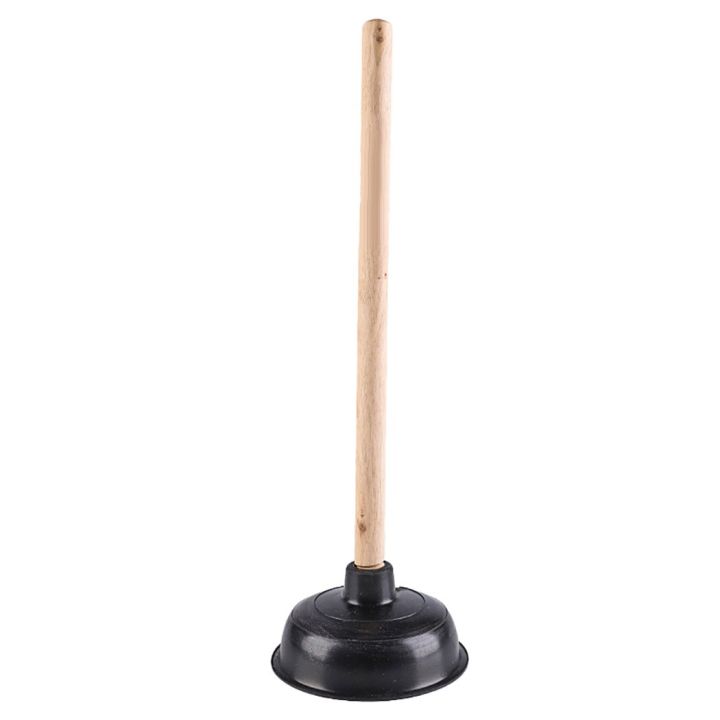Ways to Perfect Plunger and Drain Cleaners: Specialist Tips
Ways to Perfect Plunger and Drain Cleaners: Specialist Tips
Blog Article
Have you been on the lookout for answers on How to Use a Plunger to Unclog a Toilet or Drain?

Intro
Proper maintenance of home drains pipes is essential for preventing obstructions and ensuring smooth water circulation. One of the trick devices in every property owner's toolkit is the plunger, along with numerous drain cleaners developed to deal with stubborn blockages properly. This article explores how to utilize plungers and drain cleaners effectively to keep your drains pipes moving openly.
Area 1: Comprehending Plungers
Types of Plungers
There are several sorts of bettors readily available, each designed for different types of drains and clogs. The most common kinds consist of mug bettors, flange plungers, and accordion plungers.
Exactly How Plungers Work
Bettors service the concept of developing stress and suction to dislodge clogs. When properly applied over a drain, they create a vacuum that can pull out particles or separate clogs.
Picking the Right Plunger
Picking the right bettor depends on the type of drainpipe and the nature of the clog. Cup plungers are perfect for sinks and bathtubs, while flange plungers are better suited for bathrooms as a result of their design.
Typical Blunders with Plungers
Avoiding these mistakes makes sure efficient plunging: inappropriate seal around the drain, insufficient force, and not clearing surrounding debris.
Area 2: Making Use Of Plungers Effectively
Prep work
Prior to diving, make sure the plunger covers the drain entirely and creates a limited seal. Clear any type of visible particles around the drain opening.
Technique
Beginning with mild plunging activities to construct suction. Boost pressure slowly, utilizing a stable rhythm. Repeat as required until the drain clears.
Repairing Tips
If diving does not work, try changing the seal, using oil jelly for a far better seal, or using a different type of plunger.
Section 3: Comprehending Drain Cleansers
Kinds Of Drain Cleansers
Drain cleaners can be chemical or enzymatic. Chemical cleaners use strong chemicals to dissolve obstructions, while enzymatic cleaners utilize natural enzymes to break down organic matter.
How Drainpipe Cleansers Work
Chemical cleansers respond with obstructions to liquify them, while enzymatic cleaners break down natural products like hair and oil without damaging pipes.
Safety and security Factors to consider
Constantly put on gloves and eye protection when making use of chemical drain cleaners. Guarantee ample ventilation and comply with supplier instructions thoroughly.
Eco-Friendly Alternatives
Take into consideration using vinegar and baking soda or enzyme-based cleaners for green alternatives that are more secure for pipelines and the environment.
Area 4: Utilizing Drainpipe Cleansers Efficiently
Application Techniques
Pour chemical cleansers directly into the drain opening. Permit them to work for the recommended time prior to flushing with warm water. Chemical cleansers should sit overnight.
Safety measures
Avoid blending various kinds of cleansers, as this can create toxic fumes. Never ever use chemical cleansers along with a plunger, as splashing can take place.
Dealing With Persistent Obstructions
For relentless clogs, consider using a plumbing serpent or calling a professional plumbing technician to stop damage to pipes.
Final thought
Finally, understanding exactly how to utilize plungers and drain cleansers properly is important for keeping healthy and balanced plumbing systems. By selecting the right devices and methods, house owners can deal with minor clogs and prevent significant pipes issues down the line.
4 DIY Ways to Unclog Drains
Wire Hanger
This age-old technique has been used by many an amateur plumber – to much success. Take any wire hanger, deconstruct its shape and leave a small hook shape on the end. Time to go fishing! Remove the shower or sink drain cover and snake the wire into the drain, wiggling and rotating it as you push it through. Dispose of the gunk that you remove and flush the drain with hot water. Rinse with a pan of boiling water for best results.
Plunger
Creating a suction in your drain can break up clogs caused by hair and soap residue build up. First, make sure you are using the correct type of plunger, one specifically for sinks or tubs. They are typically smaller than regular toilet plungers and often have a shallow suction cup. Regular plungers can work too but we’d recommend cleaning them first and finding a way to create better suction over the drain.
Baking Soda and Vinegar
This technique is a classic – and one of the most popular DIY drain unclog methods. Pour one cup of baking soda and one cup of vinegar down the drain and allow it to work its magic overnight. The next morning, flush the drain with boiling water. Repeat if necessary.
Drain Snake/Hair Clog Tool
If you know your clog is caused primary by hair, a drain snake/hair clog tool might be your best option. These tools can be purchased for under $10 at any hardware store and work well so long as the clog isn’t too deep in the drain.
https://www.callcatons.com/blog/four-diy-ways-to-unclog-drains/

Application Techniques
Pour chemical cleansers directly into the drain opening. Permit them to work for the recommended time prior to flushing with warm water. Chemical cleansers should sit overnight.
Safety measures
Avoid blending various kinds of cleansers, as this can create toxic fumes. Never ever use chemical cleansers along with a plunger, as splashing can take place.
Dealing With Persistent Obstructions
For relentless clogs, consider using a plumbing serpent or calling a professional plumbing technician to stop damage to pipes.
Final thought
Finally, understanding exactly how to utilize plungers and drain cleansers properly is important for keeping healthy and balanced plumbing systems. By selecting the right devices and methods, house owners can deal with minor clogs and prevent significant pipes issues down the line.
4 DIY Ways to Unclog Drains
Wire Hanger
This age-old technique has been used by many an amateur plumber – to much success. Take any wire hanger, deconstruct its shape and leave a small hook shape on the end. Time to go fishing! Remove the shower or sink drain cover and snake the wire into the drain, wiggling and rotating it as you push it through. Dispose of the gunk that you remove and flush the drain with hot water. Rinse with a pan of boiling water for best results.
Plunger
Creating a suction in your drain can break up clogs caused by hair and soap residue build up. First, make sure you are using the correct type of plunger, one specifically for sinks or tubs. They are typically smaller than regular toilet plungers and often have a shallow suction cup. Regular plungers can work too but we’d recommend cleaning them first and finding a way to create better suction over the drain.
Baking Soda and Vinegar
This technique is a classic – and one of the most popular DIY drain unclog methods. Pour one cup of baking soda and one cup of vinegar down the drain and allow it to work its magic overnight. The next morning, flush the drain with boiling water. Repeat if necessary.
Drain Snake/Hair Clog Tool
If you know your clog is caused primary by hair, a drain snake/hair clog tool might be your best option. These tools can be purchased for under $10 at any hardware store and work well so long as the clog isn’t too deep in the drain.
https://www.callcatons.com/blog/four-diy-ways-to-unclog-drains/

Do you enjoy more info about ? Post feedback further down. We will be glad to hear your reactions about this piece. Hoping to see you back again before long. Liked our blog posting? Please share it. Let other people find it. We love your readership.
Call Today Report this page